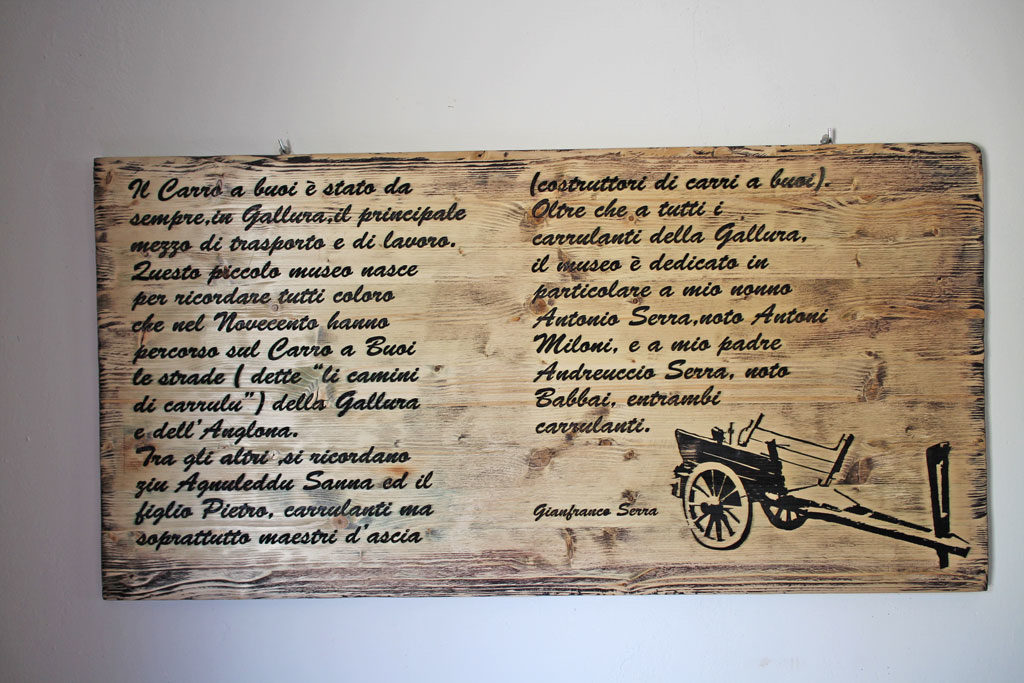The ox cart has always been the main means of transport and work in Gallura.
This small museum was created to remember all those who in the twentieth century have traveled on the ox cart the streets (li camini di lu carrulu) of Gallura and Anglona, northern Sardinia.
Among the other uncle Agnuleddu Sanna and his son Pietro, carrulanti (ox drivers) but above all mastri d’ascia (builders of ox carts).
In addition to all the ox cart drivers of Gallura, the museum is dedicated in particular to my grandfather Antonio Serra, known Antoni Miloni, and to my father Andreuccio Serra, known Babbai, both carrulanti (drivers). (Gianfranco Serra, owner of the Il Muto di Gallura farm, 2016)
The permanent museum of ox cart
Visit the ox cart museum set up inside the farm

“A li carrulanti” (Ode to the ox cart drivers)
(Dedicated to drivers and builders of ox carts)
We saw a long line of carts…
The line stopped at the curve of the road, and in the pale light of that cold Sunday afternoon the pale oxen, the pale wagons, and the men who liquidated seemed a vision: a drawing of Doré.
Voices and steps sounded sweet.
Shadows stretched across the white road, voices and footsteps sounding sweet in the soft, perfumed air.
That heartbreaker squeaking.
Even today, when you encounter a particularly noisy chariot, it is said, with a ritual joke: ``Here's one who really wants to get married``.

How is “Lu Carrulu” (the ox cart) made
(the ox cart)
Choose a beautiful trunk of holm oak (liccia) or oak (chelcu), very straight perhaps with a slight curvature at one end, to get the tail of the cart slightly raised.
The canonical length is equal to 5.10 m.
Break the trunk from the tail up to about 80 cm from the tip, where you place an iron ring (the loriga) to block the opening.
The insertion of sleepers (traessi) of increasing length gives the trunk the typical triangular shape (la scala).
The maximum throat width is 1.25 m.
On the tip (la puntetta) insert two wooden bars: a vertical (lu parapinnenti), acts as a support, and a horizontal (la capigghja) that serves as a handle for the yoke (lu ghjuali).
Two transversal tables form the seats (li banconi). In them are inserted the side shoulders, formed by ” brazzoni e jacareddhi”.
Below, at about half the space between the two “banconi”, there is a transverse axis of 1.05 m (lu fusu) in which the wheels are inserted.
The wheel (la rota) is composed of circle and spokes entirely in wood.
The tread is protected by an iron rim (lu cilciulu di farru).
The wheel is fixed to the spindle by inserting an iron wedge (lu chjudittu) into its central protrusion (lu fiascu).
The braking system (la meccanica) is composed of a stick that presses a wooden heel (lu taccu) against the wheel.
Finally, the floor is obtained covering the internal length of the cart with long and flexible branches of ash (li ‘eltichi), woven along the sleepers.


